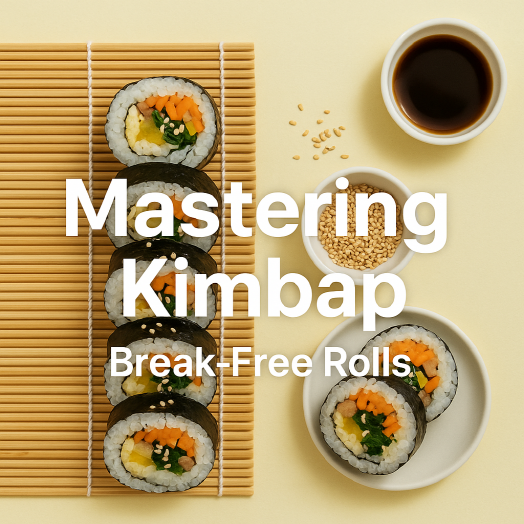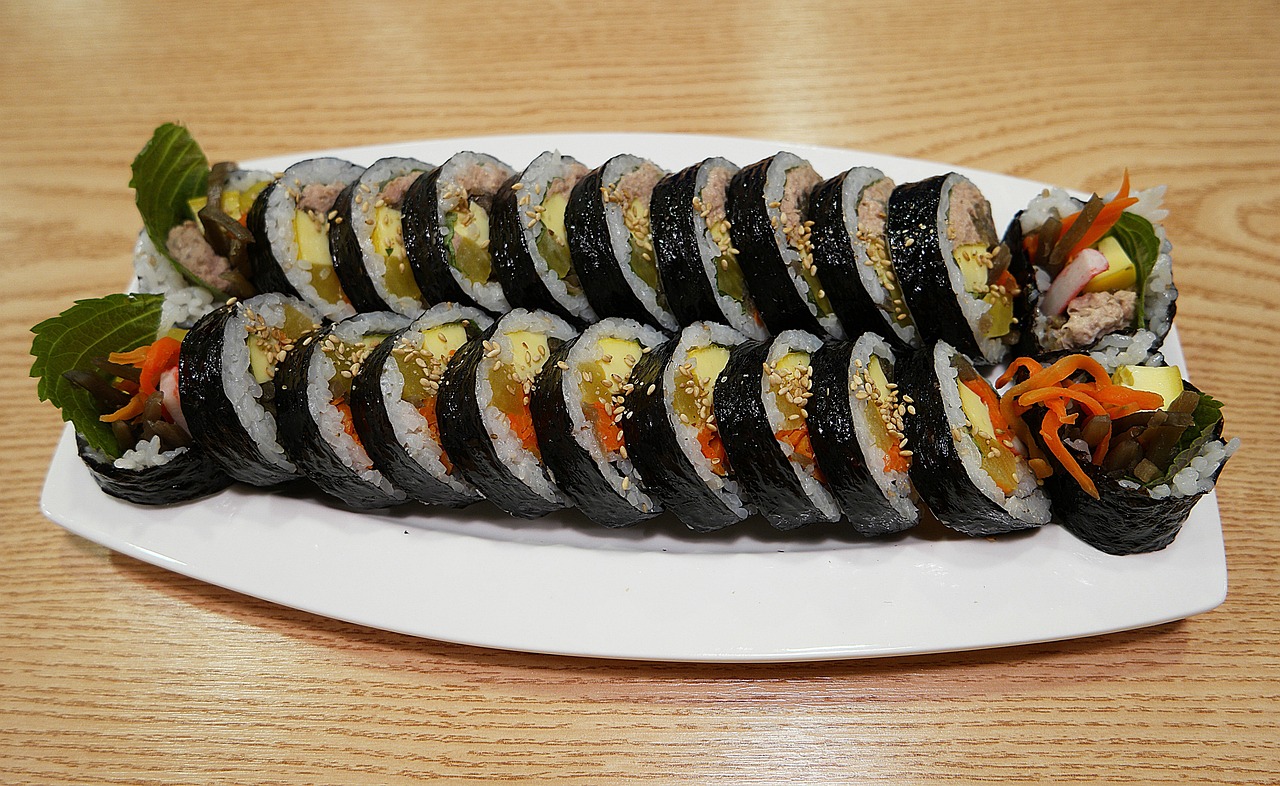
Ever roll kimbap only to watch it loosen or crack? The secret is tight pressure, dry fillings, and restraint. Follow this polished, step-by-step guide to get glossy, tidy, never-breaking rolls at home. ✨
1) The Foundation: Perfecting Your Kimbap Rice
- Soak & water control: Rinse short-grain rice until mostly clear, then soak ~30 minutes. Cook with slightly less water so the grains stay fluffy and hold their shape.
- Season smart: For 3 cups cooked rice, mix ~½ Tbsp salt, ½ Tbsp sugar, and 1 Tbsp neutral oil (or a touch of sesame oil).
- Umami boost (optional): Add a small piece of dried kelp (dashima) to the pot/rice cooker; discard after cooking.
- Cool before rolling: Let seasoned rice cool ~10 minutes; overly warm rice can soften or tear the seaweed.

Sources
The Kitchn — How to Make Gimbap
Serious Eats — Gimbap Guide
Korean Bapsang — Gimbap
2) Prepare Your Fillings Wisely (Dry Is Key)
- Squeeze & pat dry: Wring blanched spinach thoroughly; pat dry sautéed carrots, egg strips, crab, or proteins. Excess moisture = soggy nori = tearing.
- Season, then cool: Let fillings cool to room temperature so steam doesn’t weaken the seaweed.
Sources
Korean Bapsang — Gimbap
Cooking StackExchange — Squeezing Water from Spinach
3) The Art of Spreading & Stacking
- Thin, even rice layer: Cover the lower two-thirds of the seaweed with a thin sheet of rice, leaving 2–3 cm bare at the top.
- Stack, don’t scatter: Place fillings in a neat line about three fingers’ width down the center. Avoid overfilling—bulky rolls are hard to tighten and prone to splitting.
Sources
The Kitchn — How to Make Gimbap
Hungry Huy — Kimbap
4) Rolling Technique: Tight & Firm
- Use a bamboo mat (makisu): Seaweed shiny-side down. Lift the near edge over the fillings, tuck tightly, then continue rolling.
- Pull & press rhythm: As you roll, pull the mat up and forward while pressing down to apply steady pressure. Rest the roll seam-side down for a minute to seal.
- Quick fix: If a sheet tears, double-wrap with a second sheet of seaweed.
Sources
Maangchi — Gimbap
The Korean Vegan — Kimbap Tips
5) Slicing with Precision
- Sharp, lightly oiled (or wet) knife: Wipe the blade with a bit of sesame oil or water; clean between cuts so rice won’t cling.
- Long, smooth strokes: Skip the sawing motion—use one confident, smooth cut for clean edges and intact rounds.
Sources
Korean Bapsang — Cutting Tips
Reddit r/KoreanFood — Cutting Advice
Quick Workflow Checklist (Pin This ✅)
- Cook & season rice → cool 10 min.
- Prep fillings → dry very well → cool.
- Thin rice on 2/3 sheet → stack a narrow line of fillings.
- Roll with mat → pull & press → rest seam-side down.
- (Optional) Light sesame oil on the outside → slice with a sharp, oiled knife.
Pro Tips & Common Mistakes
- Hands stick? Lightly wet or oil fingertips before spreading rice.
- Rolls opening? Start with less filling and hold the first tuck firmly.
- Nori tearing? Rice too hot or too wet—cool rice longer and spread thinner.
- Uneven thickness? Keep the filling line even and narrow; trim bulky ends.
Sources
Maangchi — Gimbap
The Kitchn — How to Make Gimbap
Serving & Storage
- Gloss & flavor: Light brush of sesame oil after rolling for shine and aroma.
- Short rest: 2–3 minutes seam-side down helps the roll set.
- Pack smart: For lunchboxes, line with parchment; keep cool and slice just before eating if possible.
Sources
'Food & Korea' 카테고리의 다른 글
| 🥟 Episode 05 — A Young Chef’s Dream (0) | 2025.10.14 |
|---|---|
| Ssangdong Tongdak: The Soul of Wonju’s Fried Chicken Legacy (0) | 2025.10.13 |
| Sundae Gukbap: Korea’s Comforting Blood Sausage Soup, Reimagined for First-Timers (0) | 2025.10.11 |
| From Jeonju to the World: Discover the Magic of Bibimbap (0) | 2025.10.11 |
| Dumplings Episode 04 — Friendship in a Wrapper (0) | 2025.10.09 |



